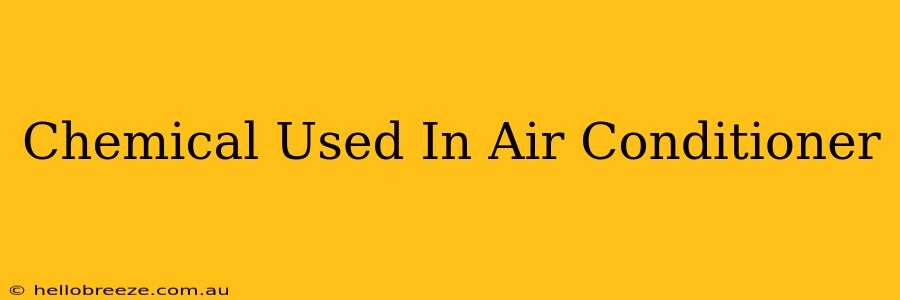Air conditioners are essential for maintaining comfort in homes and businesses, especially during hot and humid weather. But have you ever wondered about the chemical compounds that make this possible? Understanding the chemicals used in air conditioners is crucial for both safety and environmental awareness. This comprehensive guide will delve into the refrigerants used in modern air conditioning systems.
The Evolution of Refrigerants: From Harmful to Eco-Friendly
Historically, air conditioners relied on chlorofluorocarbons (CFCs) and hydrochlorofluorocarbons (HCFCs). These chemicals were incredibly effective at cooling, but they came with a devastating environmental cost: ozone depletion. The Montreal Protocol, an international treaty, phased out the production and consumption of these ozone-depleting substances (ODS).
CFCs and HCFCs: The Past
- CFCs (Chlorofluorocarbons): These were widely used for decades, but their contribution to ozone depletion led to their eventual ban. Examples include R-11, R-12, and R-502.
- HCFCs (Hydrochlorofluorocarbons): These were introduced as transitional refrigerants, less harmful to the ozone layer than CFCs but still possessing a global warming potential (GWP). R-22 is a prime example.
HFCs: A Temporary Solution
Hydrofluorocarbons (HFCs), like R-134a and R-410A, became the prevalent replacements. They don't deplete the ozone layer, but they still contribute to global warming. Their high GWP has prompted a global push for even more environmentally friendly alternatives.
Modern Refrigerants: Minimizing Environmental Impact
The latest generation of refrigerants aims to minimize both ozone depletion and global warming. These are often classified as low-GWP refrigerants.
HFOs (Hydrofluoroolefins): The Future of Cooling
Hydrofluoroolefins (HFOs) are emerging as the preferred choice. They possess very low GWP and minimal environmental impact. R-1234yf and R-1234ze are examples of HFO refrigerants gaining popularity.
Natural Refrigerants: Environmentally Friendly Options
Certain natural substances also serve as efficient refrigerants. These include:
- Ammonia (R-717): Highly efficient, but toxic and requires specialized handling.
- Carbon Dioxide (R-744): Abundant and non-toxic, gaining traction in specific applications.
- Propane (R-290): Also known as R-290, a flammable but efficient natural refrigerant.
Choosing the Right Refrigerant: A Balancing Act
The selection of the best refrigerant involves considering several factors:
- Environmental Impact: GWP and ozone depletion potential are paramount.
- Energy Efficiency: Refrigerants with high energy efficiency reduce operating costs and environmental footprint.
- Safety: Toxicity, flammability, and other safety considerations are crucial.
- Cost: The initial cost and lifecycle costs of the refrigerant and system must be considered.
Maintaining Your Air Conditioner: A Responsible Approach
Regular maintenance is crucial for optimal performance and to prevent refrigerant leaks. Leaks not only reduce efficiency but also release refrigerants into the atmosphere. Scheduling annual inspections by qualified technicians is strongly recommended.
Conclusion: A Greener Future for Air Conditioning
The ongoing development of more eco-friendly refrigerants represents a significant step toward a sustainable future. By understanding the chemicals used in air conditioners and opting for systems employing low-GWP refrigerants, we can contribute to environmental protection and mitigate the impact of climate change. Choosing responsibly designed and maintained air conditioning systems helps create a more sustainable and comfortable environment for all.

